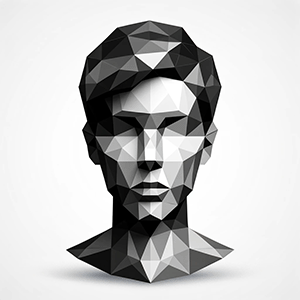Max Beckmann Quotes
- Painter
- Germany
- 1884
Max Beckmann (1884-1950) was a German painter, printmaker, and sculptor known for his powerful and emotive works that reflected the turmoil of his time. He was a prominent figure in the Expressionist movement and later became associated with the New Objectivity movement. Beckmann’s art often d…Read More
Max Beckmann (1884-1950) was a German painter, printmaker, and sculptor known for his powerful and emotive works that reflected the turmoil of his time. He was a prominent figure in the Expressionist movement and later became associated with the New Objectivity movement. Beckmann’s art often depicted the human condition, exploring themes of war, death, and the struggle for meaning in a modern world. Some of his notable works include “The Night” (1918-1919), “Self-Portrait with Horn” (1938), and “Departure” (1932-1935). He was also a prolific printmaker, creating over 350 prints throughout his career. Beckmann’s legacy continues to influence modern art, and his works can be found in major museums around the world.Read Less
Max Beckmann (1884-1950) was a German painter, printmaker, and sculptor known for his powerful and emotive works that reflected the turmoil of his time. He was a prominent figure in the Expressionist movement and later became associated with the New Objectivity movement. Beckmann’s art often depicted the human condition, exploring themes of war, death, and the struggle for meaning in a modern world. Some of his notable works include “The Night” (1918-1919), “Self-Portrait with Horn” (1938), and “Departure” (1932-1935). He was also a prolific printmaker, creating over 350 prints throughout his career. Beckmann’s legacy continues to influence modern art, and his works can be found in major museums around the world.
Max Beckmann Career Highlights
- Max Beckmann was a German painter, printmaker, and sculptor who was born on February 12, 1884, in Leipzig, Germany.
- He studied at the Grand Ducal Saxon Art School in Weimar and later at the Academy of Fine Arts in Berlin.
- In 1906, Beckmann moved to Paris, where he was influenced by the works of the Impressionists and Post-Impressionists.
- He gained recognition for his unique style, which combined elements of Expressionism, Cubism, and Surrealism.
- In 1933, Beckmann’s work was deemed “degenerate” by the Nazi regime, and he was forced to flee Germany.
- He spent the next ten years in Amsterdam, where he continued to create powerful and thought-provoking art.
- In 1947, Beckmann moved to the United States, where he taught at Washington University in St. Louis.
- He received numerous awards and honors throughout his career, including the Grand Prize for Painting at the Venice Biennale in 1950.
Key Contributions by Max Beckmann
- Max Beckmann’s work is characterized by its bold use of color, distorted figures, and psychological depth.
- He often depicted scenes of violence, war, and death, reflecting the turmoil of his time.
- Beckmann’s paintings and prints are highly sought after by collectors and can be found in major museums around the world.
- He also wrote extensively on art and his own creative process, providing valuable insights into his work.
What Sets Max Beckmann Apart
- Max Beckmann’s art is known for its raw emotion and powerful commentary on the human condition.
- He was able to combine elements of different art movements to create a unique and highly recognizable style.
- Despite facing persecution and exile, Beckmann continued to create art that challenged societal norms and pushed boundaries.
Takeaways
- Max Beckmann’s career serves as a testament to the resilience and determination of artists in the face of adversity.
- His work continues to inspire and provoke thought, making him one of the most influential artists of the 20th century.
- Beckmann’s legacy lives on through his powerful and thought-provoking art, which continues to be studied and admired by art enthusiasts and scholars alike.






